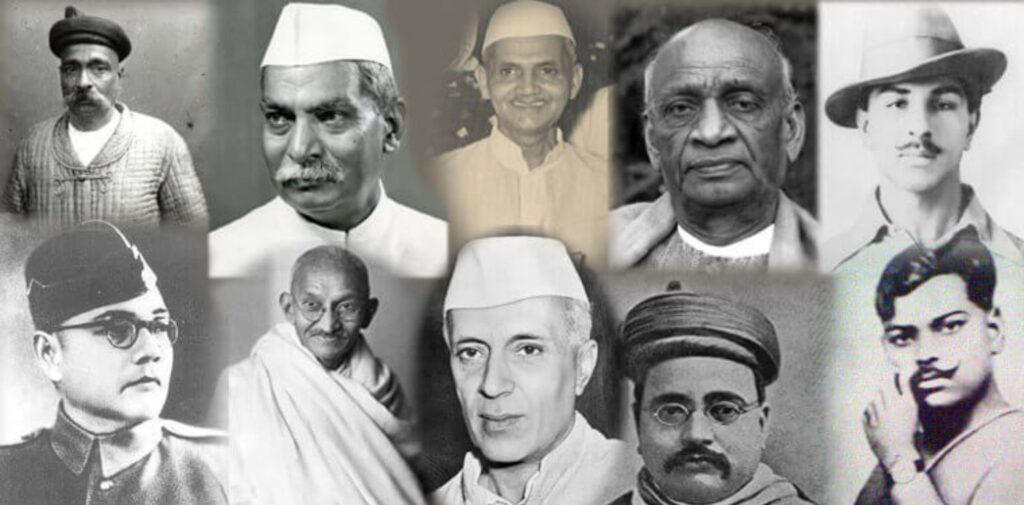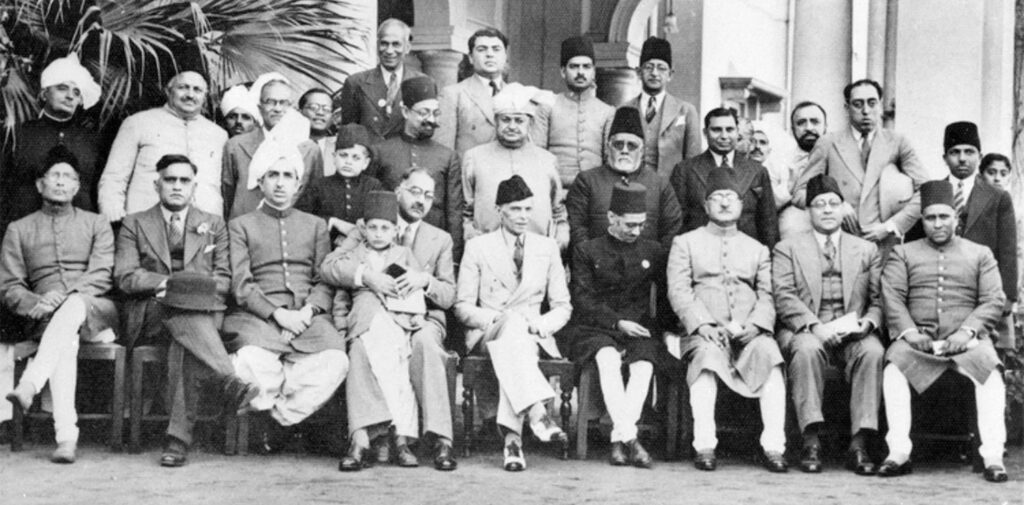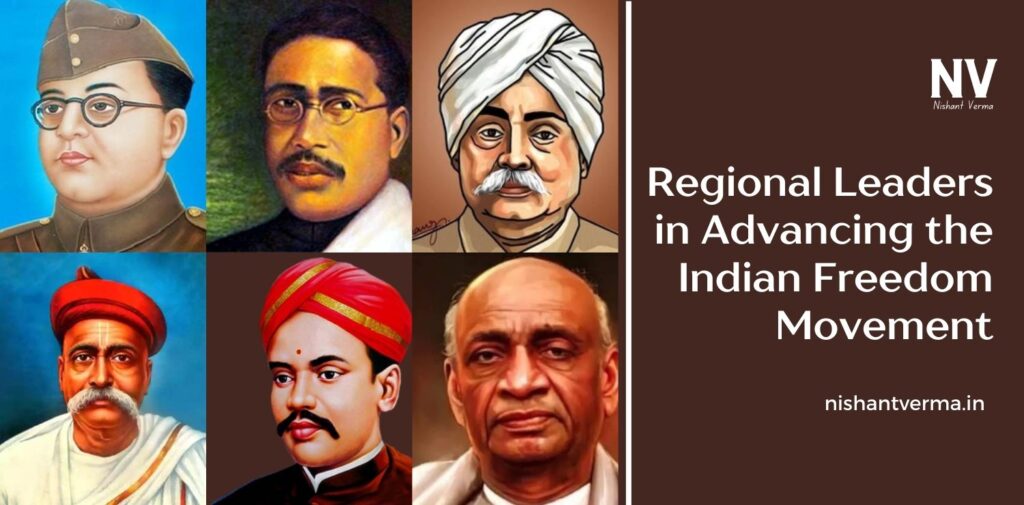India’s struggle for independence from British colonial rule was not just led by a few prominent national leaders. The movement had strong support from regional leaders who mobilized people in various parts of the country. These regional leaders, though not always in the national spotlight, played a crucial role in advancing the cause of India’s freedom. They not only worked to challenge British authority but also helped unite the diverse regions of India under a common goal – to gain independence.
This article explores the significant contributions of regional leaders in India’s freedom movement, their struggles, and their impact on the larger fight for independence.
The Role of Regional Leaders
While national figures like Mahatma Gandhi, Jawaharlal Nehru, and Sardar Patel were central to the freedom struggle, it is important to recognize that India’s vast and varied regions had leaders who, through their actions, created powerful local movements. These leaders not only opposed British rule but also worked toward social and economic reforms. They became the voice of their people, fighting for justice and equality.
Regional leaders had a deep understanding of the local issues and struggles. They could connect with the masses and inspire them to join the fight for independence. Their work often involved organizing protests, strikes, and resistance movements, which ultimately contributed to weakening British control over the country.

Regional Leaders from Different Parts of India
1. Subhas Chandra Bose – The Revolutionary Leader
Subhas Chandra Bose, though originally from Bengal, is one of the most famous regional leaders who had a national impact. His approach to achieving independence was different from that of other leaders like Gandhi. While Gandhi advocated for non-violent resistance, Bose believed that armed struggle was necessary to drive out the British. His leadership in the Indian National Army (INA) and his alliance with the Axis powers during World War II were controversial but played an important role in inspiring many to fight for independence.
Bose’s call for “Give me blood, and I will give you freedom” became a powerful rallying cry for those who believed in a more aggressive struggle. Even though the INA did not succeed in its military objectives, it left a lasting legacy of courage and determination. Subhas Chandra Bose’s role in India’s freedom movement, especially in Bengal, had a significant impact on the Indian National Congress and inspired future generations of nationalists.
2. Bipin Chandra Pal – The Leader of Bengal
Bipin Chandra Pal was one of the key figures of the early phase of the freedom movement. A strong advocate of Swaraj (self-rule) and Swadeshi (use of Indian-made goods), he was part of the radical group within the Indian National Congress that pushed for direct action against British colonial rule.
Pal’s work in Bengal was critical during the Swadeshi Movement of 1905, which arose in response to the British decision to partition Bengal. The partition aimed to divide the Bengali-speaking people, creating divisions along religious lines, which was a common British tactic of “divide and rule.” In response, Pal and other leaders led mass protests, boycotts of British goods, and appeals to Indian unity. Though the partition was reversed in 1911, the Swadeshi Movement marked a significant turning point in India’s fight for independence, and Bipin Chandra Pal was one of the leaders who gave this movement its direction.
3. Lala Lajpat Rai – The Lion of Punjab
Lala Lajpat Rai was an important regional leader from Punjab who was deeply involved in the freedom struggle. He was a strong advocate for Hindu-Muslim unity, and his efforts were crucial in mobilizing the people of Punjab against the British.
Lajpat Rai’s most notable act of defiance came when he led a protest against the Simon Commission in 1928, which was set up by the British without any Indian representation. During the protest, he was severely injured after being lathi-charged by the police. This incident became a rallying point for nationalists and sparked widespread protests across the country. Though Lajpat Rai died shortly afterward from his injuries, his bravery and sacrifices inspired many to take a more active role in the freedom movement.

4. Bal Gangadhar Tilak – The Father of Indian Unrest
Bal Gangadhar Tilak, known as “Lokmanya Tilak,” was a regional leader from Maharashtra who played a crucial role in awakening the nationalist spirit among Indians. Tilak’s famous slogan “Swaraj is my birthright, and I will not rest until I have it” became the battle cry of many freedom fighters.
He was a key figure in the formation of the Home Rule Movement, which aimed to gain self-government for Indians within the British Empire. Tilak also advocated for the celebration of festivals like Ganesh Chaturthi to bring people together and foster unity. His emphasis on self-reliance and nationalism encouraged Indians to demand more rights and question British rule.
Tilak’s legal and political struggles made him a hero in Maharashtra and beyond. He was also instrumental in shifting the focus of the freedom movement from moderate petitions to more direct and aggressive actions against British authority.
5. V.O. Chidambaram Pillai – The Voice of Tamil Nadu
V.O. Chidambaram Pillai, known as “Kappalottiya Tamilan” (the Tamil who sailed the ship), was a prominent leader in Tamil Nadu who strongly opposed British rule. He is most famous for his role in the Swadeshi Movement in the southern part of India. Pillai established the Swadeshi Steam Navigation Company to break the British monopoly on sea trade. This was a bold move that directly challenged British interests and promoted Indian industry.
Pillai’s work was essential in popularizing the idea of self-reliance in trade and industry, as well as fostering economic independence from British merchants. His arrest and imprisonment for challenging British commercial interests in the Indian Ocean made him a symbol of resistance for the people of Tamil Nadu and beyond.
6. Sardar Vallabhbhai Patel – The Iron Man of India
Sardar Vallabhbhai Patel, a key leader from Gujarat, was instrumental in uniting the Indian states post-independence. Although his major contribution came after India’s independence, his role in the freedom movement was no less significant. Patel was an ardent follower of Mahatma Gandhi and worked closely with him during the Salt March and Quit India Movement.
His leadership in organizing peasants in Gujarat against the British, particularly during the Kheda and Bardoli satyagrahas, earned him the title of “Sardar” (leader). Patel’s efforts to integrate princely states into independent India after 1947 are considered some of his most important achievements.

Regional Leaders and Their Impact
The contributions of regional leaders like those mentioned above were not only about mobilizing local populations but also about challenging British authority in ways that complemented the larger national movement. These leaders helped build the foundation for India’s freedom by:
- Mobilizing Local Masses – Regional leaders were better able to reach out to the local population, and their efforts to organize strikes, protests, and mass movements were crucial in disrupting British control.
- Strengthening Regional Unity – Through their actions, regional leaders built a sense of pride and unity among people from different parts of the country. They connected local struggles to the larger national goal of independence.
- Creating Awareness and Inspiration – Regional leaders used their positions to inspire people, encouraging them to join the freedom struggle and challenge British rule in their own unique ways. Their messages resonated deeply with the common people, many of whom had never before considered the possibility of a life free from colonial oppression.
Conclusion
The Indian freedom movement was not just the work of a few central leaders; it was a collective effort that involved countless regional leaders. These leaders, coming from different parts of the country, played an indispensable role in advancing the movement. Their courage, vision, and dedication were instrumental in galvanizing the masses and inspiring the struggle for independence.
Regional leaders like Subhas Chandra Bose, Bipin Chandra Pal, Lala Lajpat Rai, Bal Gangadhar Tilak, V.O. Chidambaram Pillai, and Sardar Vallabhbhai Patel helped shape the direction of India’s fight for freedom, showing that the freedom movement was as much a regional effort as it was a national one. Their contributions remind us that the struggle for independence was not limited to the famous leaders we often hear about but was a collective, nationwide movement that came from every corner of India




